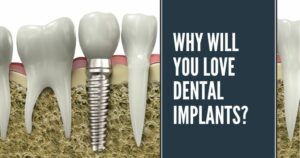FAQ: Dental Bone Grafts

Are you considering a dental bone graft procedure to prepare for dental implants or another restorative treatment? Understanding the ins and outs of dental bone grafts is crucial for making informed decisions about your dental care.
In this FAQ blog, we’ll address frequently asked questions about dental bone grafts to help you decide if this treatment is right for you.
What is a dental bone graft?
First and foremost, a dental bone graft is a surgical procedure that involves adding bone or a bone substitute to the jawbone. It’s performed to augment and strengthen the existing bone structure, providing a solid foundation for dental implants and restoring facial aesthetics.
Why might you need a dental bone graft?
You may need a dental bone graft if you have insufficient jawbone density or volume due to factors like:
- Tooth loss
- Periodontal disease
- Trauma
- Genetic conditions
Moreover, a solid foundation of bone is essential for successful implant placement and long-term stability.
How does the dental bone graft procedure work?
Our Hemet, CA, dentist will first administer anesthesia during a dental bone graft procedure to ensure your comfort. Dr. Larrondo will then make a small incision in the gums and carefully place the bone graft material in the targeted area.
Over time, the graft material stimulates new bone growth, integrating with your natural bone to create a stronger foundation.
What types of materials do you use for dental bone grafts?
Various materials can be used for these grafts, including autografts (your bone), allografts (donor bone), xenografts (animal bone), and synthetic bone graft substitutes. Our dentist will select the most suitable option based on your specific needs and preferences.
Is a dental bone graft a painful procedure?
While you may want the benefit of implants, nobody wants to contend with pain to get there. Fortunately, dental bone graft procedures are typically performed under local anesthesia, assuring you experience little to no discomfort during the process.
After the surgery, some swelling and mild discomfort may occur, which you can manage with prescribed pain medication and post-operative instructions from your dentist.
How long does it take for a bone graft to heal?
The healing time for this procedure varies from person to person and depends on factors such as the extent of the graft and your overall health and adherence to post-operative care instructions.
Generally, a bone graft can take several months to merge with your natural jawbone and create a stable foundation for dental implants or other restorations. Our dentist will give you an estimate before the procedure so you know what to expect.
Are there any risks or complications associated with bone grafts?
These grafts are generally safe procedures. However, as with any surgical intervention, there are potential risks, such as:
- Infection
- Bleeding
- Graft failure
- Complications with the healing process
Moreover, always choose an experienced dental professional who can minimize these risks through careful treatment planning and post-operative care.
How successful are dental bone grafts?
These bone grafts have a high success rate in restoring and augmenting bone tissue in the oral cavity. Their success depends on the quality of the graft material, proper placement, and overall oral health. Working closely with our skilled dentist is essential for achieving the best possible outcome.
Can anyone get these grafts?
Most individuals in good general health with sufficient amounts of healthy oral tissue are candidates for the procedure. However, each case is unique, so we’ll conduct a thorough evaluation and determine if it’s right for you.
How can I care for my dental bone graft after the procedure?
Our Hemet dentist will provide you with specific instructions on post-operative care, which may include gentle oral hygiene practices, avoiding hard or chewy foods, and taking prescribed medications as directed. We stress the importance of following these guidelines to ensure proper healing and the long-term success of your bone graft.
By understanding the significance of dental bone grafts and their role in restoring your smile, you can confidently make informed decisions about the procedure. And when you trust us with the process, you can rest assured you’re in good hands.
So contact us today to embark on your personalized smile journey!
Or
- Call us at: 951-925-6596
- Email us at: info@hemetdds.com
Larrondo Family Dentistry offers an array of services, including dental implants and bone grafts, for patients in Hemet, CA, and nearby areas of Green Acres, Homeland, Nuevo, Winchester, Lakeview, and San Jacinto.

